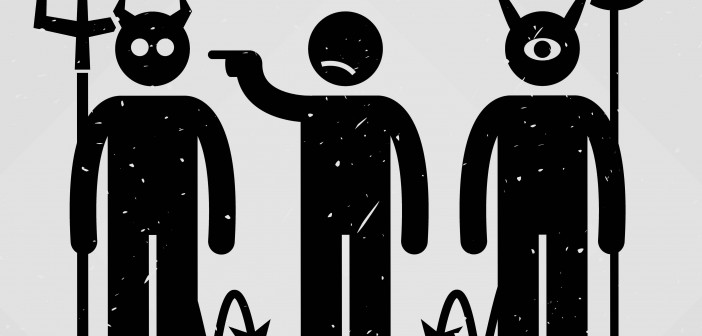Whoever quoted that originally was probably talking about their job. It goes back to the full idiom of, “better the devil you know than the devil you don’t,” which means that it is often better to deal with someone or something you are familiar with and know, even if they are not ideal, than take a risk with an unknown person or thing.
That sums up the feeling a lot of people have towards their job. They might think, “Hey, I might hate my job, but I’m not leaving it.” There is some sort of safety in the relationship, and a lot of fear in the unknown. Mix those two together, throw in a paycheck, and call it a career path. It’s understandable; it’s the road more traveled. Or is it?
Today I would like to look at employment stats and get you thinking.
How safe is that devil you know?
According to the Job Openings and Labor Turnover report (Jolts Sept /15) published by the Bureau of Labor Statistics (BLS) there were 1.7 million layoffs and discharges in September 2015 alone. This amount is considered normal. Expanded for the year, 20.4 million people were asked to leave their employer, out of the 142 million jobs in the US. Keep in mind, those are layoffs, which means a large percent of those people were really good at what they did and they were let go because the company had to make the numbers. They were simply in the wrong department or division when the axe fell.
One in seven jobs lost every year. That makes you think doesn’t it?
If you think that because your boss is your friend you are safe, think again. When I was laid off during a restructuring my direct boss didn’t know until that morning. I was literally a number with a savings amount next to it. Truly, it was nothing personal; the people letting me go didn’t even know my name or anything about what I did for the company. They were contractors from another company that specialized in this type of thing.
Yes, there are firms that specialize in letting people go. That should tell you something as well.
However, on the other side of the coin:
The same BLS reports that there were 2.7million employees who left their employer in September 2015 alone. This is considered normal too, so that not so excited feeling about your job is fairly contagious and 32.4 million people think it’s time for a change of scenery each year.
Just because I like stats
According to the Bureau of Labor Statistics, the median time that wage and salary workers have been with their current employer is 4.6 years. The median age of the US workforce is about 42. We can figure most people started work at the age of 20, so the median years in the workforce is about 22 years. A little math comes up with 4.8 jobs (22yrs/4.6yrs). Of course I’m really simplifying this, but the point is pretty easy to understand. The days of life-long employment at one job is pretty much an anomaly.
I’m not pointing out all of this for the doom and gloom factor, it’s the realistic factor. The job that is so safe and important today may not be as permanent as you think it is. Maybe you are looking to leave, maybe they are looking to have you leave—no matter the case, the odds state it’s not permanent. It has a life span and the expiration date says that after about 4.6 years after you start, it’s time to get a new one.
Now you have options: you can stick your head in the sand (think about what’s exposed) or perhaps you can look at the options. Being an entrepreneur in this case does not mean run out and quit your job, but in the same token it doesn’t mean wait until the cards are dealt against you. It means you look at your situation, and if you’re coming up on those 4.6 years, it might be a good time to undertake something new.




